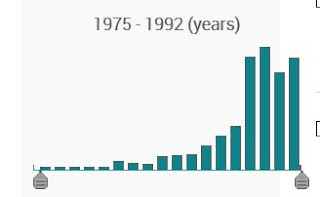Of
course, everybody has heard of Bucktown. That's where the canaries
bark at bulldogs, little girls in kindergarten sing bass and their
pappy shaves with a blowtorch. Some of society's blue bloods still
remember when their ancestors crossed the Chicago river from Goose
Island and started to pioneer Bucktown.
Throwing
things seem an inherent trait among Bucktown's citizens. Stroll
through any alley any time and you will observe some housewife
heaving a can of gooey garbage from the third story back porch. If
the garbage goes over the fence into the alley, the kids drive
another spike into the kitchen wall plaster to record the bull's eye.
The
southern boundary of Bucktown is a large automobile parking lot
called Armitage Avenue, where all the reliefers park their cars.
John Fisher Letter to
Chgo Tribune Nov 1940
To be fair, Mr. Fisher
didn't live in Bucktown, according to the census he lived on the west
side of Western in what some now call West Bucktown.
This was only the second
mention of Bucktown in the press. The first was in 1898, about the
price of bread, but that was a different Bucktown.
The original Bucktown was
what we would now call Noble Square. It's that Bucktown that Mrs.
Henry Hartjen opines on in 1953 when recalling her childhood days
around Noble and Division Sts. “Our
neighborhood was near a place called Bucktown”.
It's that Bucktown that
Nelson Algren refers to in 1947's Never Come Morning, when he says
Lefty “looks a good deal like all the other young toughs
around Bucktown”
It's that Bucktown that
a machinist and putter maker in Schiller Park named Louis Malik
talked about in 1969 when he says he came from the old Bucktown area
of Chicago, around Milwaukee and Augusta.
And it's probably that
Bucktown that the story about the residents keeping dairy goats comes
from.
The area around Armitage
wasn't called Bucktown until the 1920's. My mother lived above her
father's (Vincent Bielanski) bakery at 2059 N. Oakley at that time.
To her, Bucktown's boundaries were Damen, Western, Armitage and
Fullerton. She also thought the dairy goat thing was the funniest
thing she ever heard. “Milk was cheap as dirt” she said, “the
only goats around there were in back of Roman Bruszkiewicz's butcher
shop, next to St. Hedwig's.” She used to play with them when she
went over there to trade bread and kolacz for smoked sausage.
These boundaries remained
the same for the next fifty years.
In October of '76 the
Trib writes:
In May of '79 it
reiterates:
So when did it start to
expand?
In the summer of 1971 a
group of citizens formerly called the St Hedwig's-Pulaski Community
Organization met at Holstein Park and renamed themselves the Triangle
Community Organization. This was the forerunner of the Bucktown
Community Organization. At this stage Bucktown was just part of the
area they represented. It wasn't until 1983 that the notion of
branding the larger area as Bucktown crossed their minds.
In 1983 they published a
pamphlet called “The Triangle Community Organization welcomes you
to Bucktown” in which they declare,
“Bucktown is three
miles northwest of Chicago's Loop. Between Fullerton, Armitage, the
Kennedy Expressway and Western...”
They even included this
convenient map.
This branding paid off.
The name was picked up by realtors looking for someplace to hawk and
it was soon applied to every thing down to the Milwaukee road tracks
at Bloomingdale
Bucktown, went from a
place never advertised before 1978 to the hot neighborhood DuJour.
But still, Bucktown never
crossed the Logan Square/West Town divide.
But in 1988 a real estate
developer by the name of Ron Gan bought a tract of land at Wabansia
and Paulina from the Archdiocese. It had been the Church of the
Annunciation and its school. At one time it was the Irish church in
the neighborhood but it had been closed for a decade.
Ben Joravsky interviewed Gan
for a Reader article that year. Ben writes:
“Gan is the creative
type. He's an exuberant optimist, a master salesman. You say the land
is actually in West Town; he says, well, boundaries are subjective,
and at the very least it's close to Bucktown--which he believes has a
more upscale ring to it.”
That
was the day Bucktown
crossed the Logan Square/West Town divide. At least as far as the
realtors were concerned.
But
back then, even the Bucktown Community Organization wasn't buying it.
Their own web page said:
“the
Bucktown area
is bounded roughly by Fullerton on the north, on the east by the
Kennedy Expressway, the
Milwaukee Road railroad tracks on the south,
and on the west by Milwaukee Avenue to Western, and Western north to
Fullerton.“
At
least until 2010 when in a fit of expansionism they rewrote history
and changed it to:
“the
Bucktown area
is bounded roughly by Fullerton on the north, on the east by the
Chicago River, North Ave. to the south, and on the west by Western."
And
started hanging Bucktown signs south of the Logan Square border.
Why
did they do this?
Who
knows. Maybe they have dreams of manifest destiny. Perhaps their own
lackluster commercial areas on Armitage and on Milwaukee north of
Bloomingdale were proving to be an embarrassment.
But,
If I was Noble Square, I'd keep my back gate locked.
Paul K. Dickman


